Summary: The AI safety research community should adopt standardized terms for probability ranges, especially in public-facing communication and especially when discussing risk estimates. The terms used by the IPCC are a reasonable default.
Science communication is notoriously hard. It's hard for a lot of reasons, but one is that laypeople aren't used to thinking in numerical probabilities or probability ranges. One field that's had to deal with this more than most is climatology; climate change has been rather controversial, and a non-trivial aspect of that has been lay confusion about what climatologists are actually saying[1].
As a result, the well-known climate assessment reports from the UN's Intergovernmental Panel on Climate Change (IPCC) have, since the 1990s, used explicitly defined terms for probability ranges[2]:
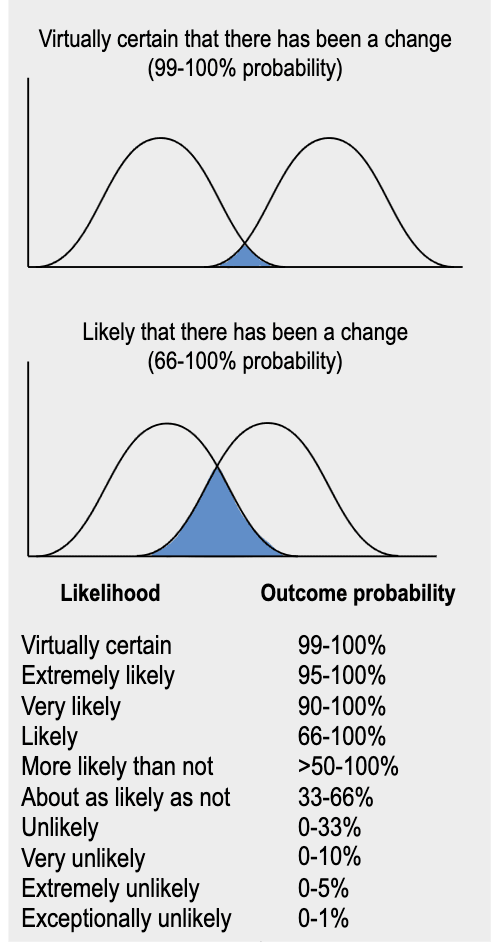
(see below for full figure[3])
Like climatology, AI safety research has become a topic of controversy. In both cases, the controversy includes a mix of genuine scientific disagreement, good-faith confusion, and bad-faith opposition. Scientific disagreement comes from people who can deal with numerical probability ranges. Those who are arguing in bad faith from ulterior motives generally don't care about factual details. But I suspect that the large majority of those who disagree, especially laypeople, are coming from a place of genuine, good-faith confusion. For those people, anything we as practitioners can do to communicate more clearly is quite valuable.
Also like climatology, AI safety research, especially assessments of risk, fundamentally involves communicating about probabilities and probability ranges. Therefore I propose that the AIS community follow climatologists in adopting standard terms for probability ranges, especially in position papers and public-facing communication. In less formal and less public-facing contexts, using standard terminology still adds some value but is less important; in sufficiently informal contexts it's probably not worth the hassle of looking up the standard terminology.
Of course, in many cases it's better to just give the actual numerical range! But especially in public-facing communication it can be more natural to use natural language terms, and in fact this is already often done. I'm only proposing that when we do use natural language terms for probability ranges, we use them in a consistent and interpretable way (feel free to link to this post as a reference for interpretation, or point to the climatology papers cited below[2]).
Should the AIS community use the same terms? That's a slightly harder question. The obvious first-pass answer is 'yes'; it's a natural Schelling point, and terminological consistency across fields is generally preferable when practically possible. The IPCC terms also have the significant advantage of being battle-tested; they've been used over a thirty-year period in a highly controversial field, and terms have been refined when they were found to be insufficiently clear.
The strongest argument I see against using the same terms is that the AIS community sometimes needs to deal with more extreme (high or low) risk estimates than these. If we use 'virtually certain' to mean 99 - 100%, what terms can we use for 99.9 - 100.0%, or 99.99 - 100.00%? On the other hand, plausibly once we're dealing with such extreme risk estimates, it's increasingly important to communicate them with actual numeric ranges.
My initial proposal is to adopt the IPCC terms, but I'm very open to feedback, and if someone has an argument I find compelling (or which gets strong agreement in votes) for a different or extended set of terms, I'll add it to the proposal. If no such argument emerges, I'll clarify the proposal to be more clearly in favor of the IPCC terms.
For ease of copy/paste, here is the initial proposed terminology in table form:
| Virtually certain | 99-100% |
| Extremely likely | 95-100% |
| Very likely | 90-100% |
| Likely | 66-100% |
| More likely than not | >50-100% |
| About as likely as not | 33-66% |
| Unlikely | 0-33% |
| Very unlikely | 0-10% |
| Extremely unlikely | 0-5% |
| Exceptionally unlikely | 0-1% |
I look forward to your feedback.
Thanks to @davidad and Stephen Casper for inspiring this proposal.
- ^
Eg: "It's so cold this week! Ha ha so much for global warming!" or "It's been proved climate change is going to kill everyone in the next twenty years, right?" Compare eg "Ha ha why would AI suddenly become conscious and start to hate humans?" or (pace EY) "So you're saying AI will definitely kill everyone, right?"
- ^
From figure 1.6 (page 157) of the most recent IPCC assessment report (2022), using terminology drawn from a number of papers from Katharine J. Mach and/or Michael D. Mastrandrea, eg "Unleashing expert judgment in assessment" (2017) and "Guidance Note...on Consistent Treatment of Uncertainties" (2010).
- ^
(note that this figure is labeled with 'AR5' but in fact is used in both AR5 and the current AR6)
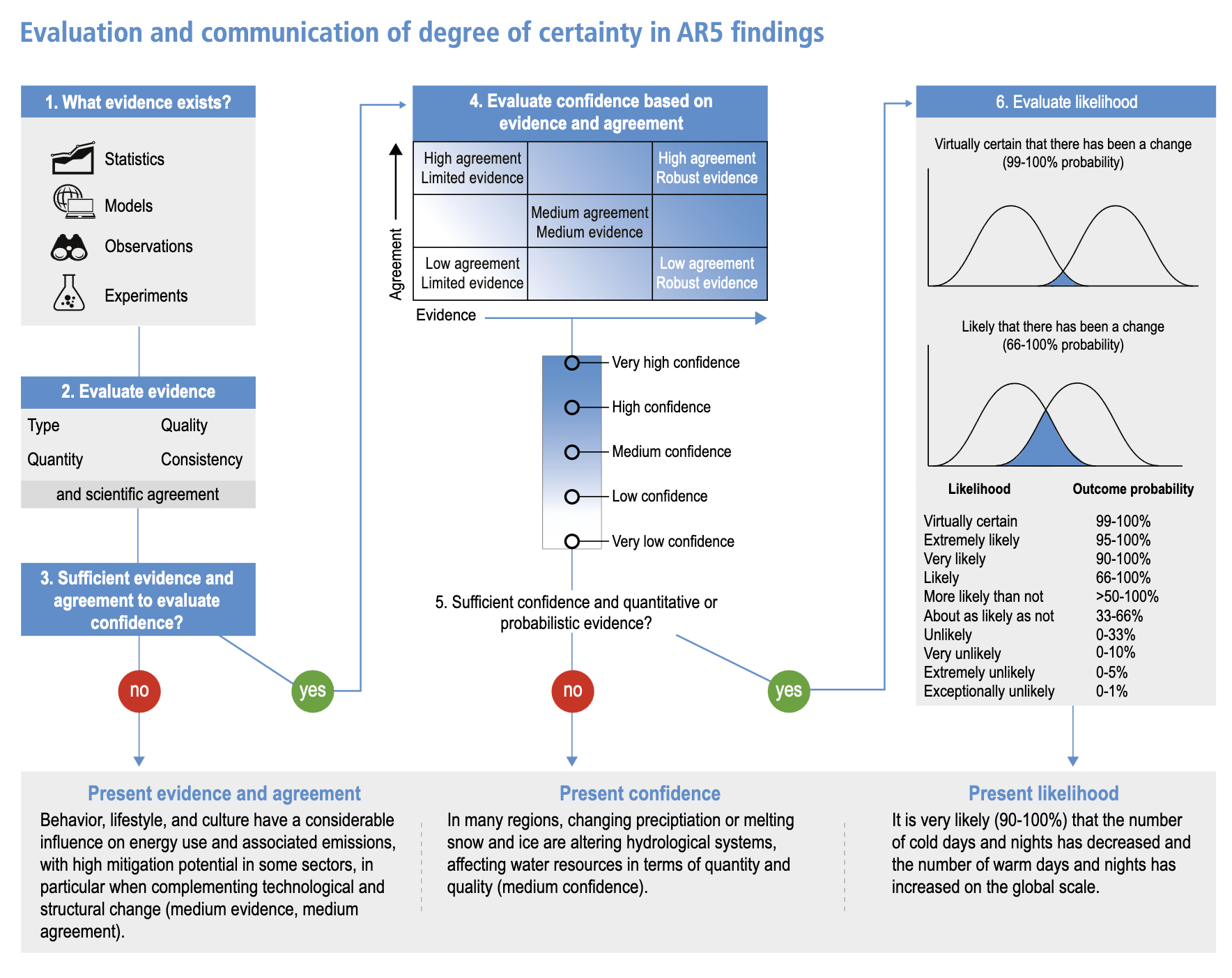
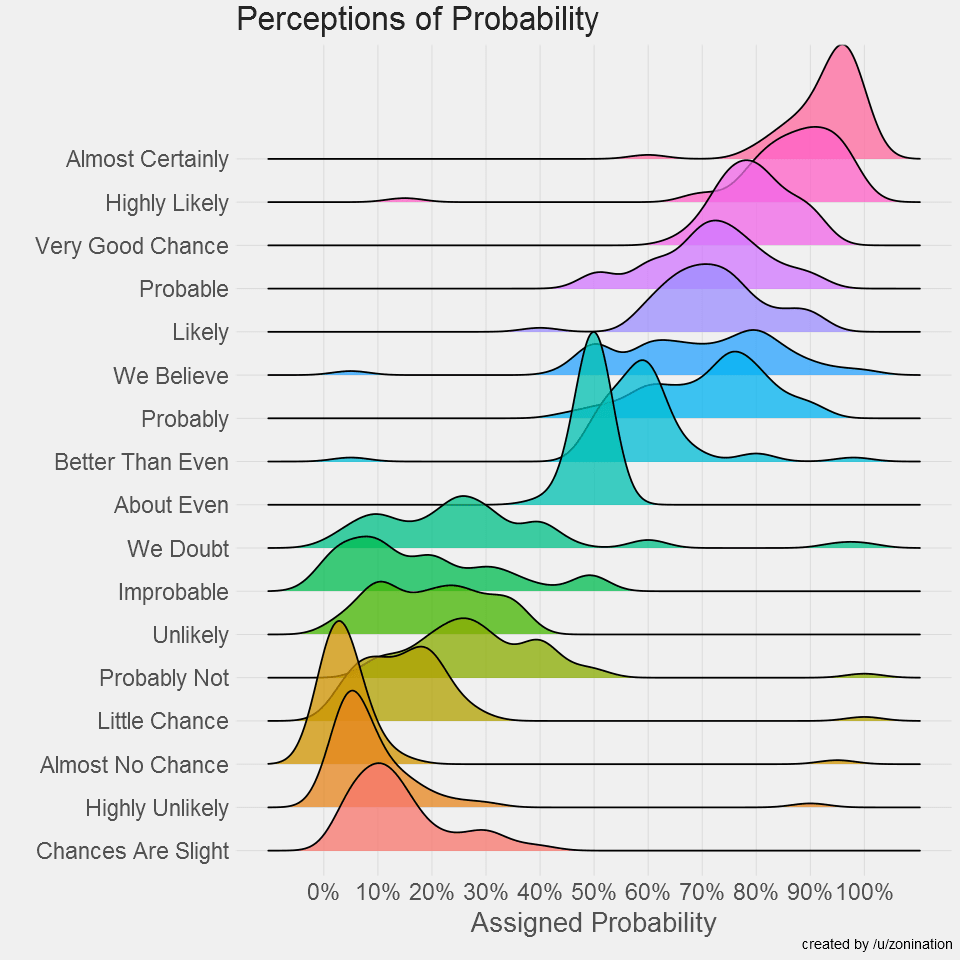
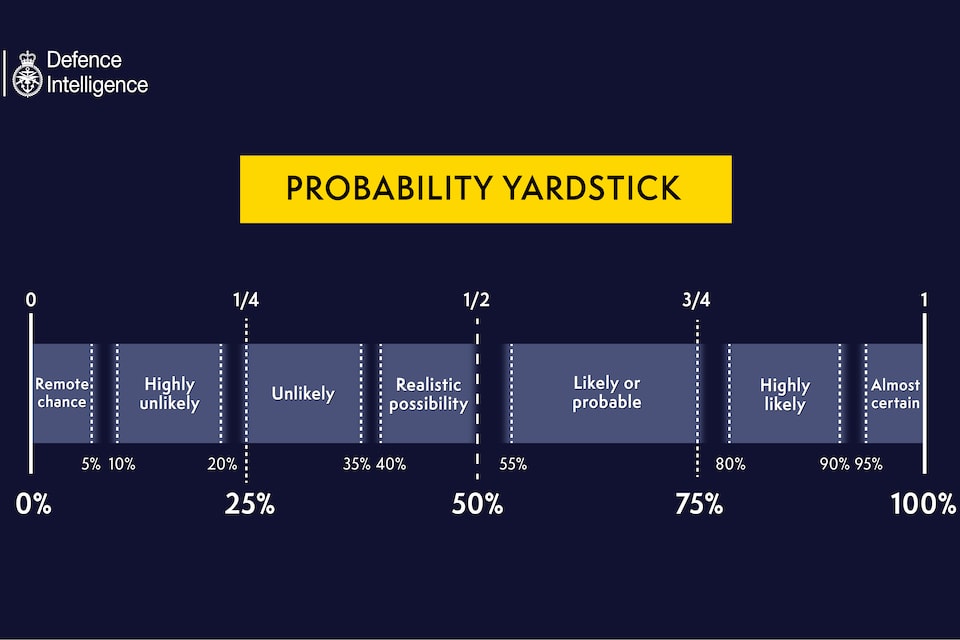
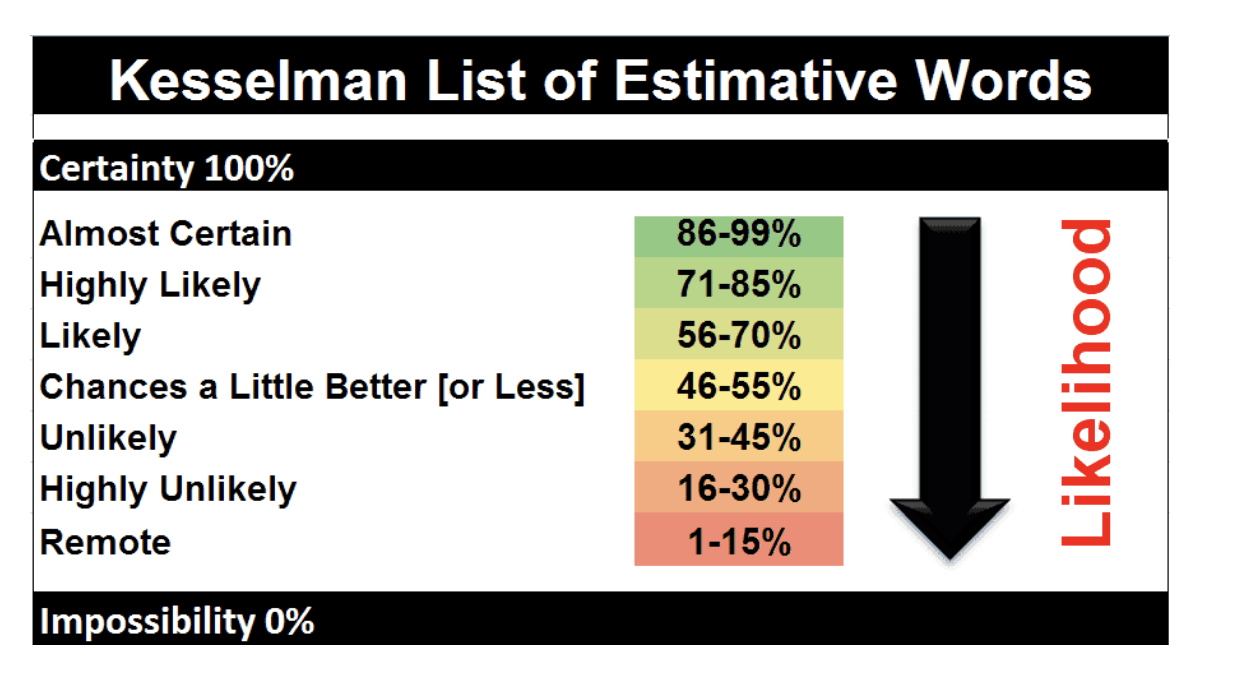
"The beginning of wisdom is the definition of terms." - (attributed to) Socrates
I'd argue that for any conversation between people to make progress, they have to have some agreeance on what they're talking about. A counter example, if I were to order a 1/4" bolt from someone and we have different measurement standards of what 1/4" is, I won't be able to build on what I've received from them. Consistency is the key characteristic that allows interoperability between multiple parties.
I appreciate greatly that Gwern uses confidence tags to convey this aspect, as it gives me a relative sense of how much I can trust a piece of evidence.
Maybe most important, I'd also argue that even if standardized usage is only used throughout the AIS community, that would be worthwhile in itself. Living in the Bay and participating in a lot of doom conversations, I believe a lot of nuance is missed and unjustly has people updating priors when having a standardized set of terms would allow people to notice when something seems off about another person's claim.
That said, even if this wouldn't help with informal discussions within the community, having more discrete terms to share would allow for higher quality information transfer between researchers, similar to the 1/4" bolt example above.
Oh, I hadn't seen Gwern's confidence tags. There's an interesting difference between the Kesselman list that Gwern draws from (screenshotted below) and my proposal above. The Kesselman terms refer to non-overlapping, roughly equal ranges, whereas the climatology usage I give above describe overlapping ranges of different sizes, with one end of the range at 0 or 100%.
Both are certainly useful. I think I'd personally lean toward the climatology version as the better one to adopt, especially for talking about risk; I think in general researchers are les... (read more)